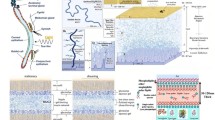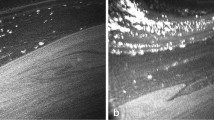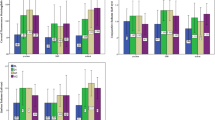Abstract
The question was raised whether ocular lubricants or artificial tears might have adverse effects on optical clarity of the eye. Eight current commercial products were tested on five young subjects, using the Straylight Meter. No adverse effects were found.
Similar content being viewed by others
References
van den Berg TJTP, IJspeert JK. Straylight Meter. In: Technical digest on noninvasive assessment of the visual system, Vol. 1. Washington DC: O.S.A., 1989: 256–59.
van den Berg TJTP. Importance of pathological intraocular light scatter for visual disability. Doc Ophthalmol 1986; 61: 327.
van den Berg TJTP, IJspeert JK. Clinical assessment of intraocular straylight. Applied Optics 1992; 31: 3694–3696.
IJspeert JK, de Waard PWT, van den Berg TJTP, de Jong PTVM. The intraocular straylight function in 129 healthy volunteers; dependence on angle, age and pigmentation. Vision Res 1990; 30: 699–707.




